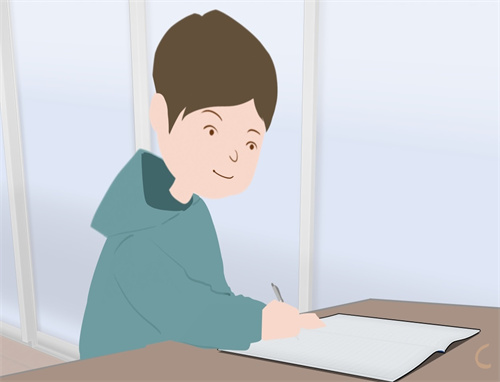朗读和听写是学外语最有效的训练方法,基础阶段必须坚持。利用好晨读时间,读时更是要用心,边看边读边记。这样才能使你得到进步,下面是小编给大家带来的高二学年的英语期末知识点,希望能帮助到你!
高二学年的英语期末知识点1
1、at
如:常用词组有: at noon, at night
表示时间的 at, in, on:表示片刻的时间,at 8 o’clock,at midnight, at the end of, at that time, at the beginning of, at the age of, at Christmas, at New Year 等。
in 表示一段的时间
如:in the morning, in the afternoon, in the evening, in October, in 1998, in summer, in the past, in the future 等。
on 总是跟日子有关,on Monday, on Christmas morning, on the following, on May Day, on a warm morning 等。
2、表示时间的 since 和 from:since 表示从过去到现在的一段时间的过程,常与现在完成时连用:from 表示从时间的某一点开始,不涉及与现在的关系。一般多与现在时、过去时、将来时连用。
如:I hope to do morning exercises from today./ We have not seen each other since 1995.
3、表示时间的 in 和 after:两者都表示“在(某个时间)之后,区别在于in表示“在(一段时间)之后” ,而 after 则表示“在(某一具体时间点之后),in 短语和将来时态连用,after 短语和过去时态或将来时态连用。
如:We’ll be back in three days.
After seven the rain began to fall.
What shall we do after graduation?
After two months he returned. 注意:after 有时也可以表示在一段时间之后(常用在过去时里)
4、表示地理位置的 in, on, to:in 表示在某范围内,on 指与什么毗邻,to 指在某环境范围之外
如:Changchun is in the northeast of China./ Mongolia is on the north of China./ Japan is tothe east of China.
5、表示“在……上”的 on 和 in:on 只表示在某物的表面上,而用 in 表示占去某物一部分,表示……上。
如:There is a book on the piece of paper./ There is an interesting article in the newspaper./ He dug a hole in the wall.
介词又叫前置词,是一种虚词。
介词分为三种,一种是简单介词,如 at, in, on, beside, to , for 等;另一种是短语介词,即由两个以上的词组组成的短语,in front of, because of, out of, instead 如 of 等;还有一种二重介词,如 until after, from behind 等。
(一) 介词的句法功能:介词不能独立在句中做成份,介词后必须与名词、代词、或动名词构成介词短语在句中充当 一个成份,表示人、物、事件等与其它人、物、事件等之间的关系。
1、 作定语: The book on the table is mine.
2、 作状语: have breakfast at seven. We (表时间)They were late for meeting because of the heavy ; rain.(表原因) ;They started the machine by pressing the button.(表方法)
3、 作表语: My dictionary is in the bag.
4、 作宾语补足语: I found him in the office.
(二) 1.表示时间的介词
(1) in表示“在某一时间段”或“在某一时候”,如用在月、季、年份、时代、世纪等时间名词的前面,或用来泛指一天的某一段时间。in也可以指“在……之后”,表示从说话起的若干时间内。
如: in July/summer/2000/ancient times
The bus will be here in ten minutes.
(2) on表示“在特定的某一天”,也可用于带有修饰语的一天的某个时间段之前。如:on Saturday, on Saturday morning, on the morning of August 1st
(3) at表示“在某一时间点”,或用来表示不确定的时间和短期的假日、时节等。
如:at six o'clock, at Easter
(4) over, through (out)两者均指“经过的全部时间”。
如:Stay over the Christmas.
(5) for与since:for表示动作或状态延续的全部时间长度,为“长达……”之意;since用于指从过去特定的某个时刻到说话时为止的一段时间;含有since时间短语的句子要用完成时,但含有for时间短语的句子不一定要用完成时。
1、形容词的定义:形容词简称adv. 形容词简称adv.修饰v. adj.,其他adv.或全句的词,v.,adv.或全句的词修饰v.,adj.,其他adv.或全句的词,表示时间,地点,程度,方式等。表示时间,地
点,程度,方式等。
2、复合形容词的构成
(1)形容词+ 名词+ ed kind-hearted 好心的,white-haired 白发的
(2)形容词+ 形容词red-hot 炽热的,dark-blue 深蓝的
(3)形容词+ 现在分词good-looking 好看的,easy-going 随和的
(4)副词+ 现在分词hard-working 勤劳的,fast-moving 快速转动的
(5)副词+ 过去分词hard-won 得来不易的,newly-made 新建的
(6)名词+ 形容词life-long 终生的,world-famous 世界闻名的
(7)名词+ 现在分词peace-loving 爱好和平的,fun-loving 爱开玩笑的
(8)名词+ 过去分词snow-covered 白雪覆盖的,hand-made 手工的
(9)数词+ 名词+ ed four-storeyed 4 层楼的,three-legged 3 条腿的
(10)数词+ 名词(名词用单数)ten-year 10 年的,two-man 两人的
什么是副词?
指出句中的副词:
1. You are standing near the camera.. Can you move a little farther? a little修饰副词“farther”表示程度 farther修饰动词“move”表示方式
2. Miss Long usually goes to school by bus. usually修饰动词goes,表示频度、频率
3. The two old passengers fell into the sea. Unfortunately, neither of them could swim. Unfortunately修饰整个句子
4. I won’t go with you. It’s much too hot today. much too修饰形容词,表示程度修饰形容词hot,修饰形容词
高二学年的英语期末知识点2
1、形容词的定义:形容词简称adv. 形容词简称adv.修饰v. adj.,其他adv.或全句的词,v.,adv.或全句的词修饰v.,adj.,其他adv.或全句的词,表示时间,地点,程度,方式等。表示时间,地点,程度,方式等。
2、复合形容词的构成
(1)形容词+ 名词+ ed kind-hearted 好心的,white-haired 白发的
(2)形容词+ 形容词red-hot 炽热的,dark-blue 深蓝的
(3)形容词+ 现在分词good-looking 好看的,easy-going 随和的
(4)副词+ 现在分词hard-working 勤劳的,fast-moving 快速转动的
(5)副词+ 过去分词hard-won 得来不易的,newly-made 新建的
(6)名词+ 形容词life-long 终生的,world-famous 世界闻名的
(7)名词+ 现在分词peace-loving 爱好和平的,fun-loving 爱开玩笑的
(8)名词+ 过去分词snow-covered 白雪覆盖的,hand-made 手工的
(9)数词+ 名词+ ed four-storeyed 4 层楼的,three-legged 3 条腿的
(10)数词+ 名词(名词用单数)ten-year 10 年的,two-man 两人的
高二学年的英语期末知识点3
主谓一致
1、以单数名词或代词、动词不定式短语作主语时,谓语动词要用单数;主语为复数时,谓语用复数。(最基本的)
2、由and或both……and连接的并列成分作主语时,谓语动词用复数。
但并列主语如果指的是同一人、同一事物或同一概念,谓语动词用单数。
3、由and连接的并列单数主语之前如果分别由each, every, no修饰时,其谓语动词要用单数形式。
4、主语是单数时,尽管后面跟有 but ,except, besides, with ,as well as ,together with ,along with,like 等引导的介词短语时 ,谓语动词与前面的主语一致。
注意:主语和谓语之间插入了分词短语,谓语要与主语保持一致。
5、一些只有复数形式的名词,如people, police, cattle, clothes等作主语时,谓语动词要用复数。
6、集体名词family, class, team, group 等看作整体时,谓语动词用单数;看作每一个成员时,谓语动词用复数。
7、 当表示国家,城市,人名,书名,报纸,杂志,及组织机构等的专有名词做主语时,作为整体,谓语动词用单数形式。
The New York Times is reading all over the United States . 《纽约时报》
8、 news ,maths,physics ,politics等词貌似复数,实为单数,其谓语动词用单数.
9、“the +形容词”(如the poor ,the rich ,the young, the old , the dead ,the sick,the brave 等)作主语,谓语动词往往用复数
10、表时间、距离、价格、度量衡等的名词作主语时,谓语动词通常用单数。
11、由连词not……but……, or, either……or, neither……nor, not only…but also,等连接的并列主语,如果一个是单数,一个是复数,则谓语动词按就近一致原则,与最靠近它的主语一致。(这个就是就近原则)
12、There be句型、以here开头的句子谓语动词和靠近的主语一致。
13、a number of后面加复数名词或代词,其动词用复数形式;但the number of后面加复数名词或代词时,其谓语用单数。
14、在定语从句中主语是关系代词who , that , which , 谓语动词的数应与先行词的数一致。
注意:在“one of +复数名词+ who/that/which”引导的定语从句中,从句谓语的单复数取决 于one前是否有the (only)、the very。如果有,从句的谓语动词用单数,如没有the only, 就用复数形式。
省略
(有个表格:见英语选修6附录)
Ⅰ、状语从句中的省略用法
以if从句为代表的状语从句中的特殊省略用法:通常省略了it is,that is,there is/are。
Ⅱ、定语从句中的省略用法
关系词的省略 关系代词that,which,whom等在限制性定语从句中充当宾语且不位于介词之后时,可以省略;in which或that在先行词way后作方式状语从句时可省略。
Ⅲ、虚拟语气中if及should的省略
1、 当条件状语从句中有were,had,should等时省略if,把它们提至句首,形成倒装句。
2、 Suggest,insist,order,require等表示建议、要求、命令的动词后接的名词性从句中,谓语动词常用“should+动词原形”,should可以省略。
Ⅳ、不定式符号to的省略
1、 感官动词see,hear,feel,watch等和使役动词have,make,let等后接不定式作宾语时,不定式省略to。
2、 在特定语境中为了避免重复,当不定式再次出现时,在want,wish,hope,try,plan,like,love,hate后往往只保留to,而省略后面的动词。但不定式后有be,have时,也保留be和have。
Ⅴ、So和not的替代性省略
用于避免重复前面所说过的内容,替代词so/not替代肯定或否定的名词性从句。可与believe,do,expect,fear,guess,hope,say,speak,suppose,think,I’m afraid等连用
倒装
1.在there be/live/lie句型中用全部倒装:
2.在以there, here, now, then +be/come/go+主语的句子中用全部倒装:
注:如果主语是代词则不用倒装。
3.以off, away, out, in, up, down等副词开头的句子以示强调或为了使情景更生动,句子用全部倒装:
注:如果主语是代词则不用倒装。
4. only, not until所修饰的介词短语、副词或状语从句放在句首时,要部分倒装:
注:①主句倒装,从句不倒装。
②Only+主语置于句首时,不倒装。
5. never, hardly, seldom, scarcely, barely, not, few, little, often, by no means, at no time等放在句首时,要部分倒装:
6.在no sooner…than; not only…but also; hardly/scarcely …when; 句型中,前面的句子要部分倒装:
注:not only…but also, neither…nor连接两个主语不倒装。
7.以so, neither, nor开头的句子,表相同概念的肯定或否定时,要全部倒装:
e.g.:
I have never been to Beijing. Nor has he.
She is a teacher, so am I.
8.so/such…that句型中,把so/such修饰的那部分放在句首时,主句要部分倒装:
9.as引导的让步状语从句,常把表语、状语置于主首,用倒装:
注:如果表语是单数可数名词,该词前一般不加冠词。
Child as he is, he knows a lot.
10.省略if的虚拟条件句置于句首时,用倒装:
11. Such作表语放在句首时,表示强调,用倒装:
12. 为了保持句子平衡,或使上下文连接更紧,可把介词短语、形容词短语、副词或分词提到主语前,用全部倒装语序:
高二学年的英语期末知识点有哪些相关文章:
★ 高二英语必背知识点重点归纳
★ 高二英语语法知识点归纳
★ 高二英语学习的四个知识点
★ 高二下学期英语重点短语
★ 高二下学期英语期末考试试卷
★ 高二英语重点短语大全
★ 高二英语下学期期末考题
★ 高二下学期英语期末考试题
★ 高二英语学习总结
★ 2017学年高二英语期末复习计划
上一篇:高二英语上学期期末知识点概括归纳
下一篇:关于环保的英语作文范文5篇






